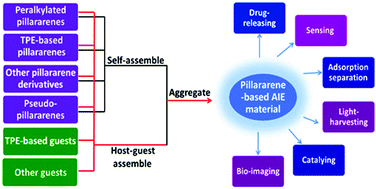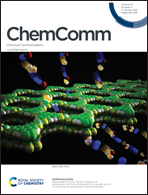Pillararene-based AIEgens: research progress and appealing applications
Abstract
As a photophysical phenomenon, aggregation-induced emission (AIE) was proposed by Tang in 2001. Due to their excellent fluorescence emission performance, AIEgens and AIE-based fluorescence materials have shown great application potential in a wide range of science fields. Hence, exploring new AIEgens and construction of novel AIE materials are especially vital. In addition, as a new class of macrocyclic hosts, pillararenes have shown excellent performance in supramolecular chemistry. Interestingly, pillararenes also exhibited fairly bright application prospects in the AIE area: firstly, some research studies suggested that pillararenes could serve as a novel AIEgen with considerable fluorescence emission in the aggregated state; moreover, they could also participate in the construction of AIE materials and have potential application in various areas. In this review, we summarised the recent development of pillararene-based AIE materials from the following aspects: pillararenes as novel AIEgens, the TPE functionalized pillararene-based AIE materials, the pillararene-based AIE materials constructed by supramolecular assembly, and the functionalized pseudo-pillararene-based AIE materials. It is hoped that this feature article will attract increasing attention and pave a new way for the development and application of pillar[n]arene-based AIE materials in more fields.



 Please wait while we load your content...
Please wait while we load your content...